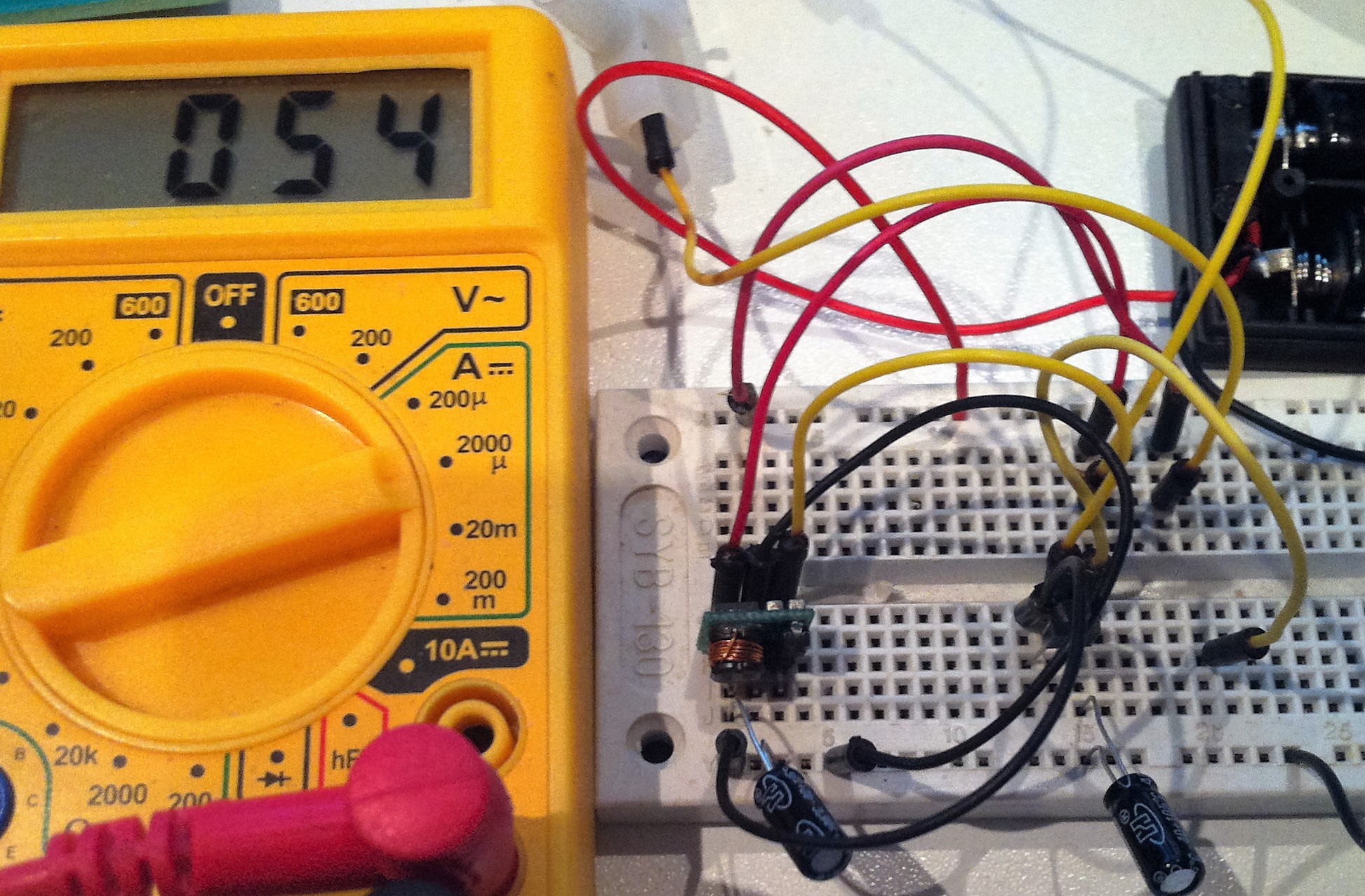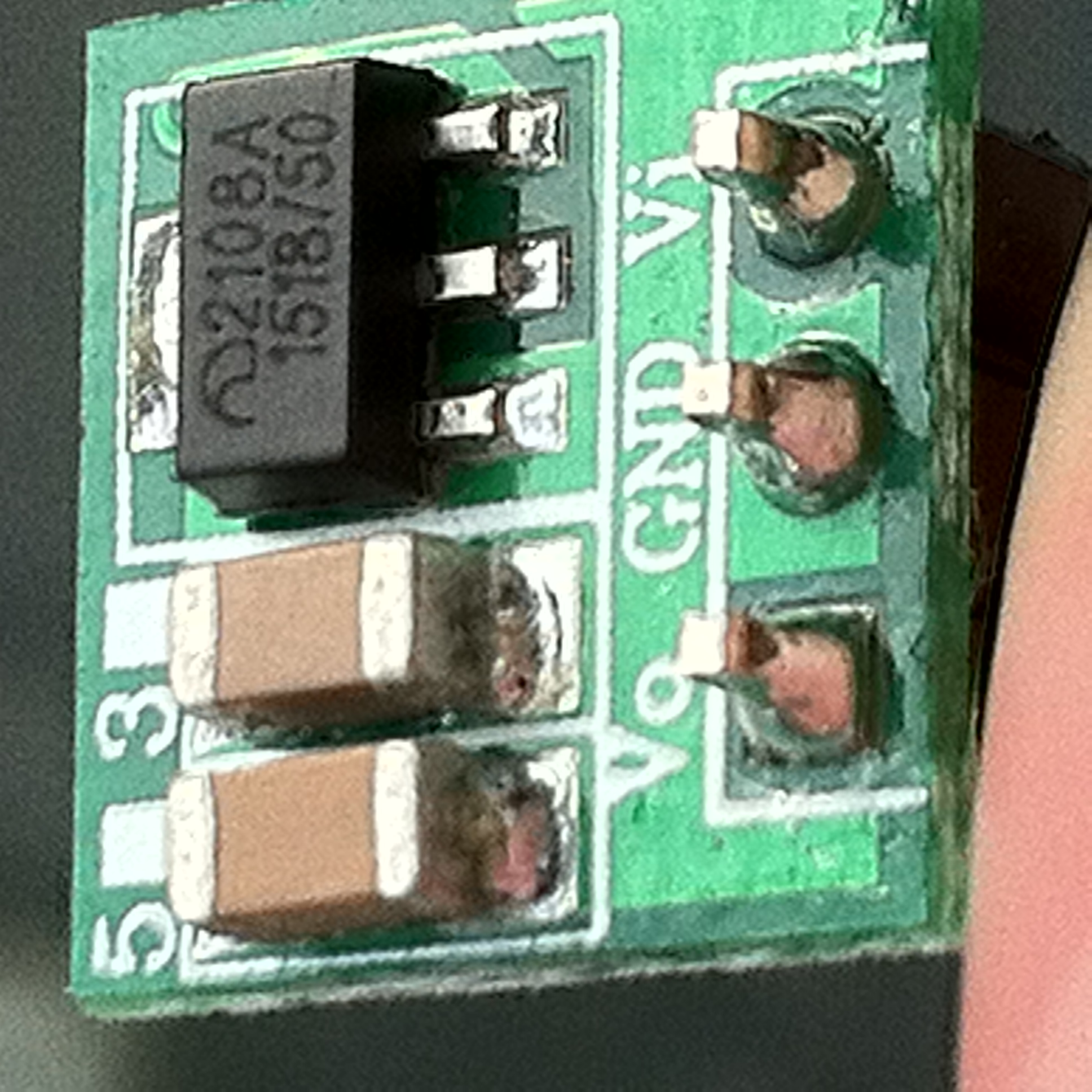Test of Step-Up-Modules (sparkfun, Pololu & china-module) / any other?
-
Just took the time to shoot a pic of my Step-Up consumption, including a Voltage regulator MCP1702-3.3
As you can see, it's consuming 54uA with nothing connected.
Step-Up module: link
The capacitors are really important, one on the input of the step-up module, the other on the output of the MCP1702-3.3, both are 22uF. Without them, consumption is 2.20mA

-
Hi.
maybe it could help some people to "evaluate theoretical" quiescent current...
if I remember right (I am not in front of my stuff), we can calculate the theoretical power consumption at Input like this:
I_input = (Vout * I_circuit)/(Vbat * Eff)
where
I_input = power consumption at Input
Vout = booster voltage output
I_circuit = power consumption of the circuit
Vbat = battery voltage
Eff = booster efficiency for Vout and VbatNow, if we take MCP1651, and says we have:
- a circuit which consumes 50uA (including booster quiescent current, sensors, leakage and a well designed circuit...)
- a MCP16251 booster with 3.3V output on a single 1.5V cell. Efficiency won't be the same during the whole life. And it is not an ultra high efficiency booster or it it would be named like "ultra high" (when they can, they do advertisement ;) ). This is why we can only see the efficiency at 1mA. But what is efficiency under very light loads (<100uA)? It should need to be tested. no matter, we assume it is like on datasheet.
So here we have Eff=85% at VIN=1.5V and Eff=80% at 0.9V (near end of life)
Some maths gives us:
I_input = (Vout * I_circuit)/(Vbat * Eff)
I_input = (3.3V * 50uA)/(1.5V * 0.85)
I_input= 129uA
So it should use approximatively 129uA at Input/batt.Another maths, if batt is at the end of life:
I_input = (3.3V * 50uA)/(0.9V * 0.80)
I_input= 229uASo here we can see that quiescent current of booster is not always the biggest problem.
I hope it can help in your choice. And I hope to have not done a mistake lol!
-
This guy has actually tested the mcp16251 and posted his findings on YouTube https://m.youtube.com/watch?v=O5o6JUjz6Yc



